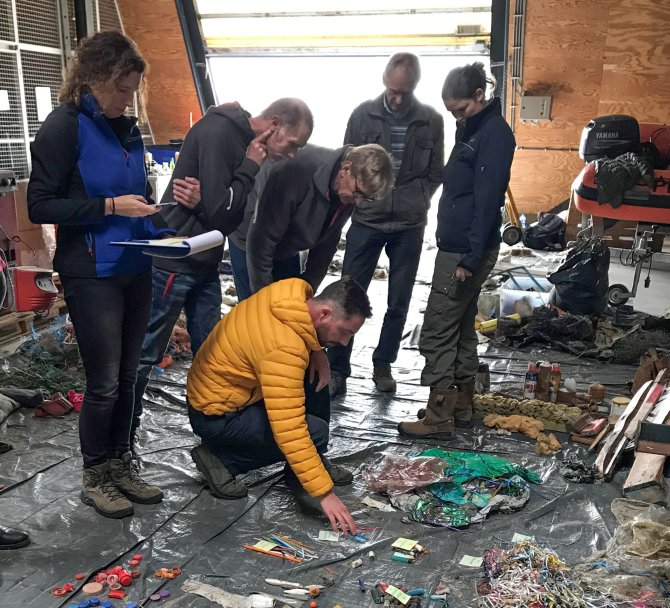
News
Plastic soup detectives analyse litter from the Wadden Sea
Researcher Wouter Jan Strietman analysed the origins of the marine litter using the Litter-ID method developed by Wageningen University & Research (WUR). In September 2019 he and his team applied this method to litter that had washed up on the Wadden island Griend. The results were published today in a report.
“Finding solutions to Marine litter is a major challenge,” says Wouter Jan Strietman. Animals of all sizes, from zooplankton to whales can be affected by ingesting plastics or getting entangled in nets and ropes. Marine litter also pose a safety risk to shipping due to the risk of entanglement in ship propellers and poses a threat to coastal communities and tourists who are unwittingly exposed to this waste.
“Luckily, many people are taking action. However, often it is not known which actions are most effective, simply because the origin and underlying causes are unknown. As researchers, we have therefore developed the Litter-ID method, specifically designed to obtain that type of information. Rijkswaterstaat Noord-Nederland asked us to apply this method to help them investigate the sources of litter in the Wadden Sea.”
A modern-day Sherlock
In September 2019, Wouter Jan and his research team partnered with local stakeholders to analyse 340 kilos of litter that had been collected on the Wadden island of Griend during a beach clean-up by volunteers of the Dutch Society for Nature Conservation (Natuurmonumenten). Like a modern-day Sherlock Holmes, they carefully analysed every single item and looked for clues that could tell them more about its origin, the underlying cause for it to end up in the sea and its interaction with the local ecosystem.

Cola bottles, cushions, and fishing nets
In three days, the team sorted 3,700 pieces of litter into different categories and analysed them in more detail. Two categories of litter clearly dominated: consumer waste and fishery waste. These included everyday objects such as sweets wrappers, balloons, and cola bottles, as well as ropes and bits of fishing nets. Some of the waste even originated from the MSC Zoe container spill, such as cushions and shoes.
Best by date
It is not always possible to identify the origin of all beach litter items, simply because the sender did not leave a note identifying themselves. However, quite a lot of litter can be traced by closely examining certain external clues and texts. “Most food products contain texts and best by dates, such as sweets wrappers and plastic tubs of butter,” explains Wouter Jan. “We discovered that 80% of the waste that could be traced back to its origin came from the Netherlands. The remaining 20% came from England and France, probably pushed by sea currents to Griend.”
Targeted action with the Litter-ID method
The heart of the Litter-ID methodology is formed by ‘Litter-ID workshop sessions’. These are interactive workshops where beach litter is analysed in more detail than by commonly applied beach litter analysis methods. By actively involving local industry groups, policymakers, environmental organisations, other stakeholders experts in this endeavour, a better understanding and feeling of ownership of the issue and the solutions can be cultivated, paving the way for the development of more effective measures,“ says Wouter Jan.
Dutch Jozo salt on Spitsbergen
Griend and the Wadden Sea are connected to the entire North Atlantic area. Litter from the Wadden Sean can therefore flow into the North Sea and wash up in Germany, Denmark, and even the North Pole. And it can happen very quickly: the litter now floating in the Wadden Sea may reach the drift ice within only 1,5 years.
“According to the literature, we knew that it was possible for litter to travel such huge distances. Our previous Litter-ID research on Svalbard, Greenland, and Iceland proved this. There we found a plastic toy ship from England and a JOZO saltshaker from the Netherlands. Did the satlshaker really come from the Wadden Sea? It might just have.”
Stopping the influx together
“The JOZO saltshaker tells us that Dutch litter can wash up on the shores of our northern neighbours in no time. That makes our solution their solution as well,” concludes Wouter Jan. By combining local solutions with solutions for the shipping and fishing waste that ends up in international waters, we can all work to stop the influx of plastic together. “We hope our Litter-ID research makes an important contribution to the knowledge needed to achieve this.”